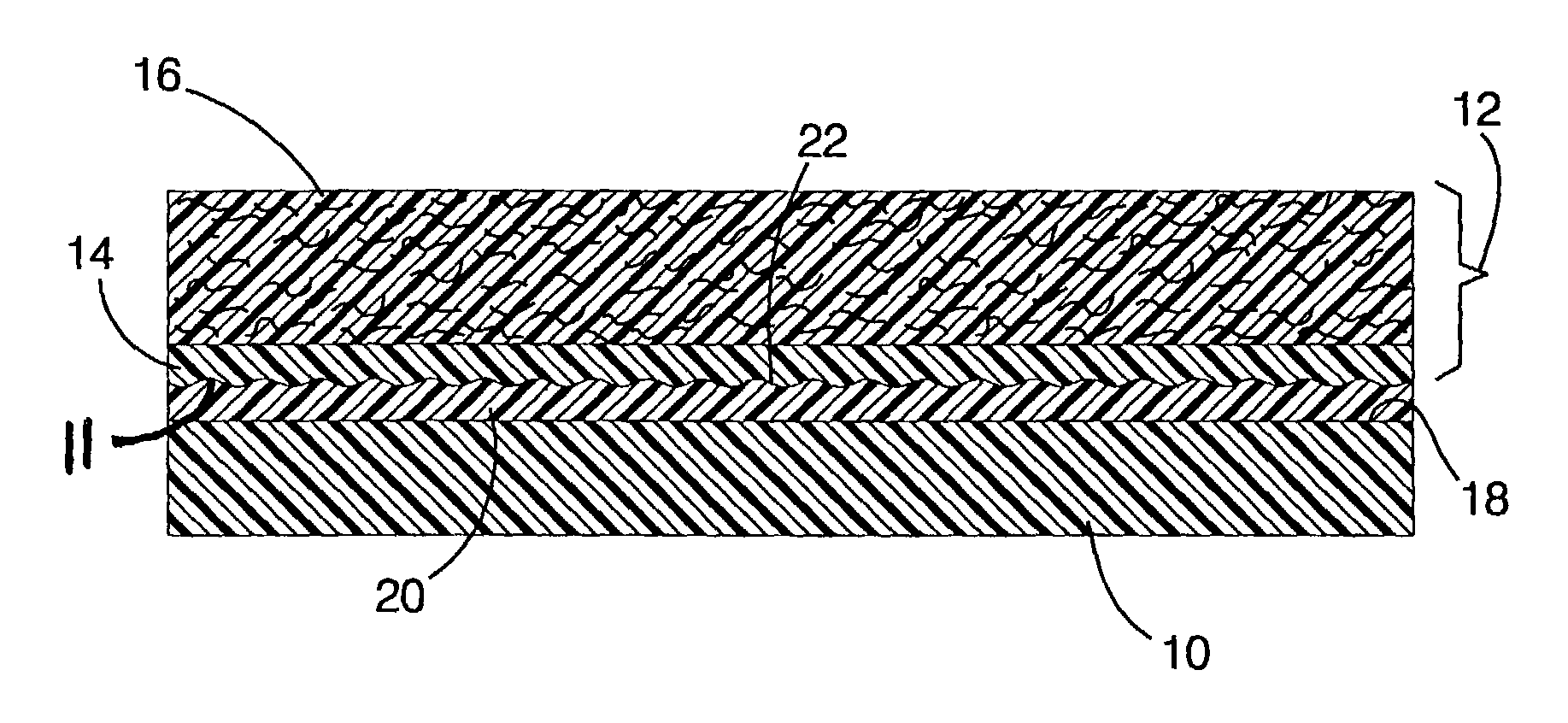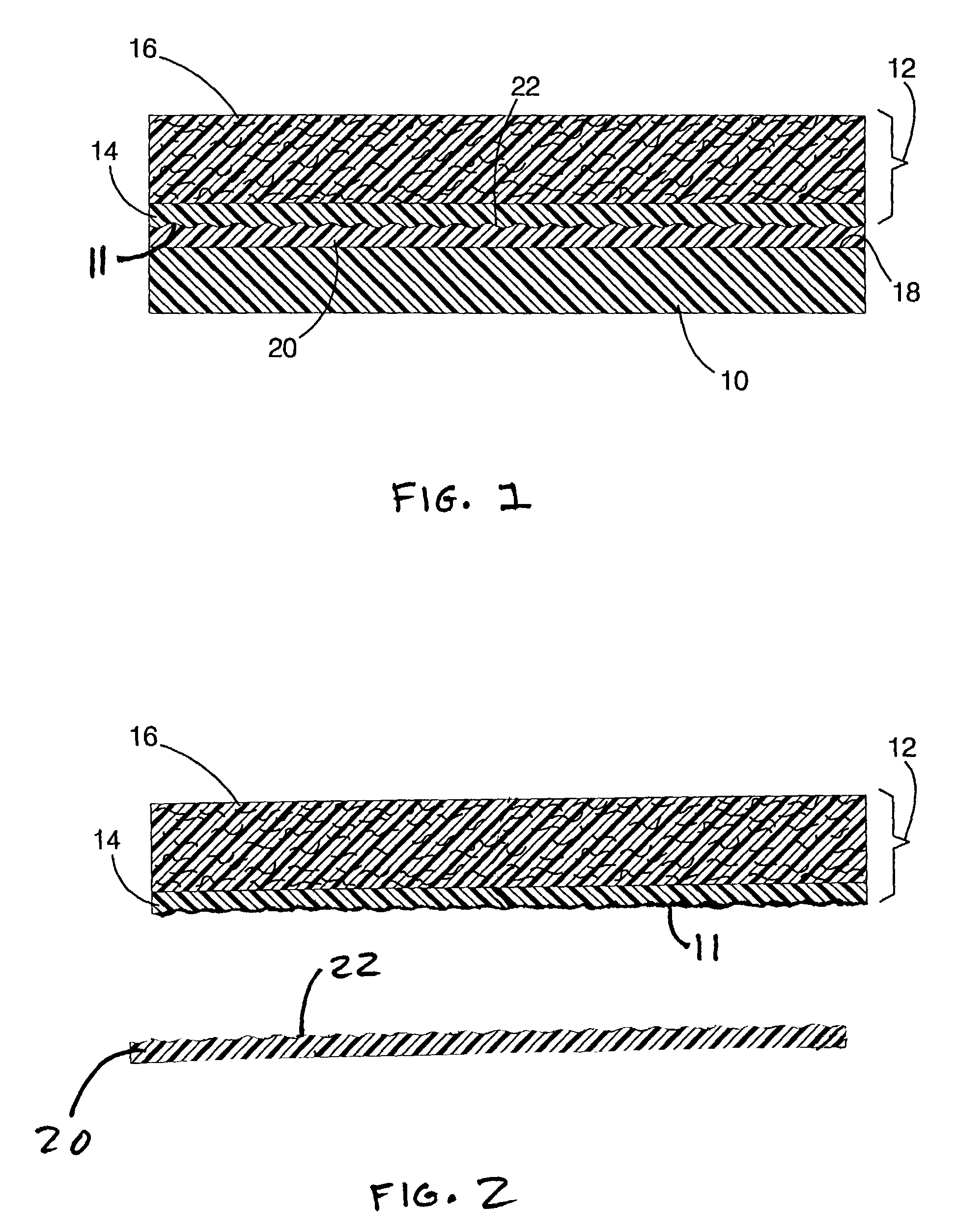Method of forming a composite article with a textured surface
a composite article and surface technology, applied in the direction of surface layering apparatus, manufacturing tools, catheter, etc., can solve the problems of reducing the production efficiency of composite articles, affecting the quality of composite articles, and forming molds from lower cost and less durable materials, so as to achieve rapid damage or wear of mold surfaces, reduce the production cost, and reduce the effect of manufacturing costs
- Summary
- Abstract
- Description
- Claims
- Application Information
AI Technical Summary
Benefits of technology
Problems solved by technology
Method used
Image
Examples
Embodiment Construction
[0016]Illustrated in FIG. 1 is a cross-section through a portion of an open tool mold 10 on which a composite article 12 is in the process of being cast. As is typical in the art, the article 12 is formed by depositing a gel coat layer 14, over which a fiber-reinforced laminate 16 is applied. Following complete curing in the mold 10, the gel coat layer 14 and laminate 16 form the unitary article 12 whose outer surface 11 is defined by the cured gel coat layer 14. Advantageously in accordance with the present invention, a film layer 20 having a textured film surface 22 is formed onto the mold surface 18, as described further below. As shown in FIG. 2, the cured gel coat layer 14 takes the shape of the textured film surface 22 and provides an outer textured article surface 11 of the article 12 which preferably provides a textured show surface that requires no additional processing or painting for finishing. Such a finish would be a suitable show surface for automotive interior and ext...
PUM
| Property | Measurement | Unit |
|---|---|---|
| thickness | aaaaa | aaaaa |
| thickness | aaaaa | aaaaa |
| thickness | aaaaa | aaaaa |
Abstract
Description
Claims
Application Information
 Login to View More
Login to View More - R&D
- Intellectual Property
- Life Sciences
- Materials
- Tech Scout
- Unparalleled Data Quality
- Higher Quality Content
- 60% Fewer Hallucinations
Browse by: Latest US Patents, China's latest patents, Technical Efficacy Thesaurus, Application Domain, Technology Topic, Popular Technical Reports.
© 2025 PatSnap. All rights reserved.Legal|Privacy policy|Modern Slavery Act Transparency Statement|Sitemap|About US| Contact US: help@patsnap.com



